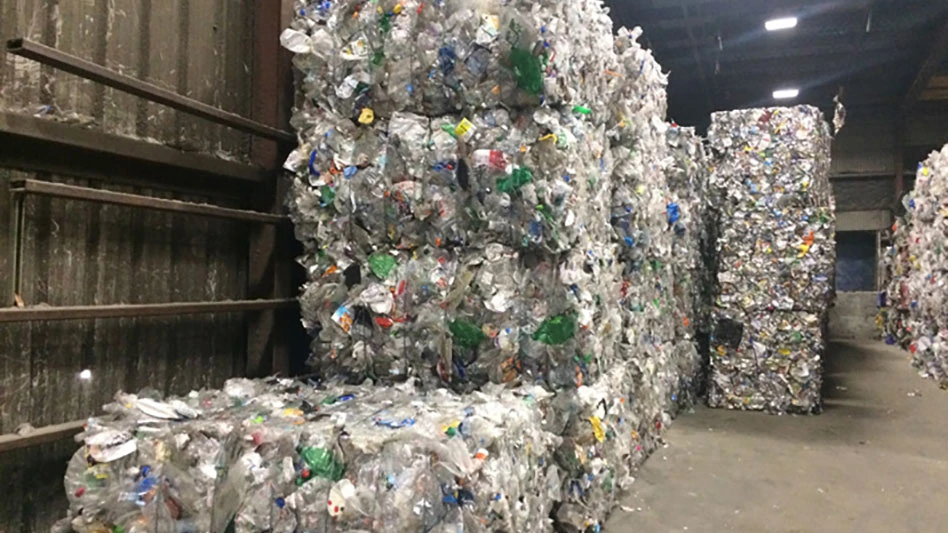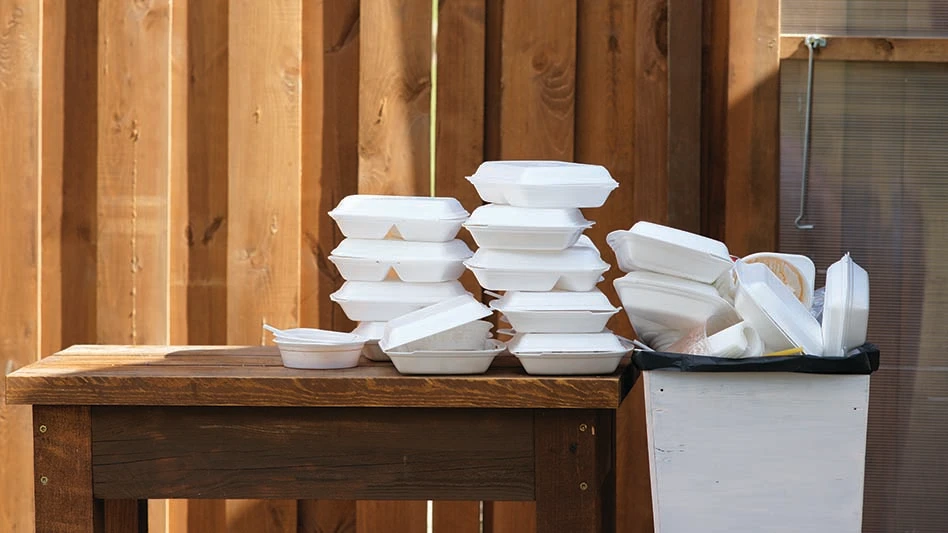A rising tide lifts all boats," John F. Kennedy remarked in regard to the positive effects of a healthy economy. For recyclers of construction and demolition (C&D) debris, a healthy construction industry has been the rising tide keeping their industry on a stable course.
Most of North America’s major metropolitan areas witnessed a steady amount of C&D activity in 1999, making for another year with welcome markets for crushed concrete. Simultaneously, the demolition of structures to make way for new projects generated enough debris to feed processing equipment and end markets.
As with most other years in the decade of the ‘90s, 1999 helped stabilize and solidify markets for the most common C&D recyclables, while offering hope for advances with other materials.
CONCRETE MARKETS ARE SOLID
Several trends have combined to spur the growth of concrete crushing in the 1990s, and none of those growth trends shows signs of reversing.
The logic of minimizing (or avoiding) transportation costs remains a key to the acceptance of recycled aggregates by construction project managers. An increase in petroleum prices in 1999 certainly did nothing to dispel that logic. Concurrently, quarries nearer to urban centers are increasingly reaching the end of their production capabilities while new quarries are located an even further truck drive away from commercial business districts, airports and other large aggregates consuming areas.
In most instances, the use of crushed concrete at or near a demolition site can save dual hauling costs: the cost of hauling aggregates in from a distant quarry, and the cost of hauling debris away from a demolition site and to a landfill.
Transportation logistics, of course, is not the only factor in determining whether concrete crushing will be profitable. The cost of owning and operating equipment (or hiring a subcontractor) must go on the expense side of the ledger, and the resulting transportation and cost-of-aggregates savings must provide a payoff.
The numbers are adding up for an increasing number of companies, especially when they are involved in larger projects generating significant tonnages of concrete rubble. Major interstate highway projects, new or re-paved airport runways, and downtown stadium and arena construction jobs are among the high-profile projects that now commonly feature on-site concrete crushing operations.
Pricing and demand remained stable for crushed concrete in most sections of the country in 1999, with many large crushing operators reporting increased volume.
POTENTIAL DEVELOPMENTS IN THE WOOD MARKET
While 1999 did not create any overnight changes in demand or end markets for most waste wood recyclers, some development occurred that could bode well for demolition wood recycling.
Kafus Industries Ltd. has positioned its CanFibre Group Ltd. subsidiary, Toronto, to become a significant consumer of waste construction and demolition wood.
CanFibre has developed a process to use waste wood as the primary feedstock for medium-density fiberboard, a wall construction building product. The company’s first plant in Riverside, Calif., has produced its first run of "AllGreen" brand MDF. Although the plant has been producing starter and shop grade MDF since late spring, the plant is now producing an industrial grade MDF.
CanFibre expects to begin commercial shipment of the product soon, along with AllGreen MR (moisture resistant) materials and AllGreen FR (fire resistant) products.
The company’s effort to consume waste wood in the production of a building product has earned it a Sequoia Award for environmental leadership from the Association of Woodworking & Furniture Suppliers (AWFS), Commerce, Calif.
As the California plant goes online, the company is also midway through construction at a plant in Lackawanna, N.Y., and is in the permitting process to build another waste wood-consuming plant in south Chicago.In Chicago, the company has secured a waste wood supply agreement and sales contract that confirms the purchase of feedstock for the entire annual output for the plant for 20 years. The total expected financed cost of the Chicago facility is $120 million.
On the East Coast, a Massachusetts company has sold two licenses for a system that converts waste wood into activated carbon, a coal-like material used for filtration purposes.
Jim McElvenny, president of Strategic Technologies, Beverly, Mass., believes the system can provide a viable opportunity for wood recyclers within an existing value-added end market.
The current value of activated carbon, according to McElvenny, is in the range of 50 cents to 75 cents per pound. Waste water treatment plants, pulp and paper mills and other facilities that filter dirty air and water use the material, he notes.
Activated carbon currently on the market uses coconut shells imported from nations such as Sri Lanka as a primary ingredient, with three companies dominating the market, according to McElvenny.
With the Strategic Technologies system, waste wood can be converted into either activated carbon or into coal, which presents a larger market but which is currently selling at only one or two cents per pound. The two license purchasers are targeting the activated carbon market, according to McElvenny.
McElvenny has been researching the process for two years, and has been studying ways to re-use waste wood for 12 years. The Activated Carbon Conversion System allows wood recyclers to turn every six pounds of waste wood into roughly four pounds of marketable activated carbon or coal. Additionally, molten lead is separated during the process and poured into lead bouillon forms.
McElvenny, who has a patent pending on the system, calls it "a great method to commercially justify recycling construction and demolition materials."
One more encouraging note for wood recycler in 1999 came in the form of an August 12 executive order from the federal government designed to develop and promote the use of alternative fuels, including "biomass" fuels made from waste wood.
METALS PRICES INCH UP
Demolition contractors and concrete crushers, along with other scrap generators across North America, were certainly dismayed by scrap steel’s plummeting value in the second half of 1998.
A dictum often cited by scrap industry veterans—that the prices are always a lot slower going back up than they were heading down—proved true in 1999. Average per ton prices for ferrous scrap (as calculated by American Metal Market) edged up nearly every month in 1999, but failed to crack the $100 per ton level. Generators can continue to root for added price gains in the hope that prices will again match early 1998 levels of $130 per ton or more.
The most commonly harvested nonferrous metals at C&D sites—aluminum and copper—enjoyed some price increases in 1999. Both copper and aluminum enjoyed price gains in either the spring or summer of 1999.
MIXED FORTUNES
Markets for materials that have traditionally struggled to sustain developed markets—such as gypsum drywall and asphalt shingles—remained in their holding patterns in most regions.
On the gypsum side, one success story is playing out in North Carolina, where Waste Reduction Products Corp. has ramped up operations at its drywall recycling facility. According to Waste Reduction Products Corp. Vice President Gerry Sutton, the company’s plant is consuming 1,500 tons per month of scrap wallboard.
The company, based in Goldston, N.C., southwest of Raleigh, takes in drywall generated as prompt scrap at manufactured housing factories, as well as accepting scrap drywall from contractors for a tipping fee that is usually priced about one-half the rate of C&D landfill tipping fees.
Roofing shingles are another C&D material that remain infrequently recycled. Raisch Products, San Jose, Calif., is among the companies experimenting with recycling asphalt shingles in such applications as in cold patch or hot mix asphalt, or for use as temporary roads at construction sites and other locations where heavy equipment is in action.
John Armando, manager of marketing and business development at Raisch, notes that equipment to shred or grind the pliable shingles is still not readily available.
The author is the editor of C&D Recycler.

Explore the August 2001 Issue
Check out more from this issue and find your next story to read.
Latest from Recycling Today
- MTM Critical Metals secures supply agreement with Dynamic Lifecycle Innovations
- McClung-Logan Equipment Company joins Tana’s authorized dealer network
- Grede to close Alabama foundry
- Plastics Recycling Conference 2025: Working toward their targets
- SWACO rolls out new commercial recycling and food waste programming
- Updated: Matalco to close Canton, Ohio, plant
- Metso launches electric Anode Weighing and Casting Machine
- Circular by Shapiro releases '5 for Five' sustainability series






